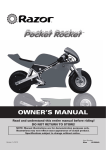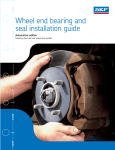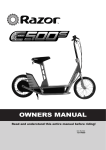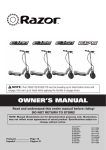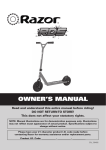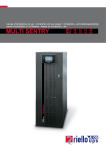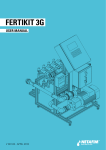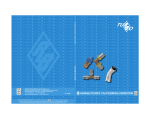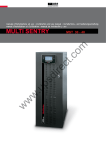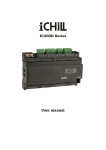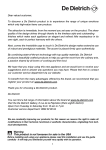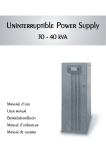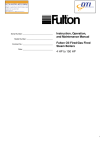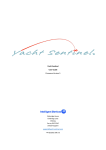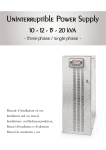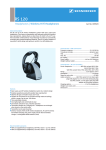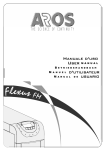Download - Dutypoint
Transcript
VG Variable Speed Twin Pump Booster Sets FULL USER GUIDE © Manual Copyright Dutypoint Systems 2013 The contents, information and copyright of this manual are the sole property of Dutypoint Systems. No part of this manual may be copied, reproduced, stored or transmitted in any form, or be translated into any language without prior written permission of the owners. Every effort has been made to ensure the accuracy of this manual at the time of printing, however our policy of continuous improvement means that specifications and instructions may change without notice. Please Note: If the sytem that you have purchased has been modified, updated or otherwise altered from the Dutypoint standard range, additional information applicable to the change(s) will be provided in Appendix E at the end of this manual. DUTYPOINT SYSTEMS SHEPHERD ROAD GLOUCESTER GL2 5EL UK Tel: 44 (0) 1452 300592 Fax: 44 (0) 1452 303691 Email: [email protected] www.dutypoint.com Dutypoint Part Number VG - M03 Iss.4 - Aug 2013 Contents VG Iss.4 - Aug 2013 Iss.4 - Aug 2013 1 User Guide - VG Variable Speed Twin Pump Booster Sets SAFETY Important Health & Safety Information User Guide - Document Conventions .........................................................................6 United Kingdom Health & Safety at Work Act 1974 .................................................... 7 Dutypoint responsibility ...................................................................................7 Customer / Contractor responsibility ...............................................................7 Pump Servicing ..........................................................................................................7 Electrical Safety ..........................................................................................................7 High voltages ...................................................................................................7 Electronic safety devices .................................................................................8 High voltage testing may damage electronic components .............................. 8 Operating Limits For Standard Dutypoint Pumpsets ..................................................9 Section 1 Introduction Welcome .....................................................................................................................12 VG Series Overview ...................................................................................................13 Technical features ...........................................................................................13 Options ............................................................................................................13 Pump Overview ..........................................................................................................13 Teknospeed Variable Speed Drive .............................................................................14 Pressure Vessels ........................................................................................................14 Control Panel Overview ..............................................................................................15 Commissioning and Post-Installation Help .................................................................15 Commissioning ................................................................................................15 Post-Installation Help ...................................................................................... 15 Section 2 Specifications, Configurations & Dimensions Identifying Your Pump ................................................................................................18 General Specifications ................................................................................................18 Performance & Control ....................................................................................18 Construction ....................................................................................................18 Dimensions .................................................................................................................19 Electrical Specifications ..............................................................................................19 Pump Performance .....................................................................................................20 2HM Series Pumps - Operating Characteristics @ 2850rpm 50Hz ................20 4HM Series Pumps - Operating Characteristics @ 2850rpm 50Hz ................21 Section 3 The Control Panel Control Panel ..............................................................................................................24 Section 4 Installation, Commissioning and Routine Maintenance Installationand Commissioning Overview ...................................................................30 Installation and Pre-Commissioning Checks ..............................................................30 Pipework and mechanical components ...........................................................30 Electrical ..........................................................................................................30 Final checks before commissioning ................................................................ 31 Pressure Vessel Precharging .....................................................................................31 Venting Pumps ...........................................................................................................31 Procedure for flooded suction .........................................................................31 Procedure for lift suction ..................................................................................32 Operational and Performance Tests ........................................................................... 32 Duty/Standby sets ...........................................................................................32 Duty/Assist sets ...............................................................................................32 Commissioning/Handover Check ...............................................................................33 Routine User Maintenance .........................................................................................33 Recommended user weekly checks ................................................................ 33 Recommended user quarterly checks .............................................................33 Recommended user 6 monthly checks ...........................................................33 2 VG Iss.4 - Aug 2013 Contents Essential 12 monthly (maximum interval) service ........................................... 34 Detailed Pump Maintenance ...................................................................................... 34 Detailed Controller Maintenance ................................................................................ 34 Detailed Accessory Maintenance ............................................................................... 34 Section 5 Troubleshooting First Step When a Fault Occurs ................................................................................. 36 General Pump Troubleshooting ................................................................................. 36 Technospeed Controller Troubleshooting .................................................................. 37 Appendix A Manufacturer’s Guide - CEA-CA, HM-HMS Electric Pumps General User Guide ....................................................................................................... 40 Failure Analysis System Procedure ............................................................................... 47 Appendix B Manufacturer’s Guide - Teknospeed Instructions for Installation and Use............................................................................... 58 Troubleshooting .......................................................................................................... 67 Appendix C Manufacturer’s Guide - FAM Pressure Vessel General ....................................................................................................................... 84 Installation Safety Notes ............................................................................................. 84 Periodic Maintenance ................................................................................................. 84 General Maintenance and Repair .............................................................................. 84 Precharge instructions .................................................................................... 85 Diaphragm replacement .................................................................................. 85 Installing a Replacement Vessel ................................................................................ 86 Appendix D Miscellaneous Technical Information Net Positive Suction Head (NPSH) ............................................................................ 88 Cavitation ........................................................................................................ 88 Calculating NPSH ........................................................................................... 88 Convertion Factors ..................................................................................................... 89 Variable Speed Flow, Head and Power Calculations ................................................. 90 General Operating Limits (Standard Dutypoint Pumpsets) ........................................ 90 Appendix E Additional Information VG Iss.4 - Aug 2013 3 User Guide - VG Variable Speed Twin Pump Booster Sets 4 VG Iss.4 - Aug 2013 SAFETY Important Health & Safety Information Please read this section before attempting to use or work on your VGPumpset as it contains important Safety Information and the System Operating Limitations. VG Iss.4 - Aug 2013 5 User Guide - VG Variable Speed Twin Pump Booster Sets User Guide - Document Conventions Throughout this manual, text may be accompanied by one of the following icons. Where these occur the conventions shown below are applied. In general these conventions will also apply to OEM Manufacture’s manuals that are included within this User Guide, however variations may occur, but these will be redefined at the beginning of their manual. DANGER Denotes attention to the possibility of the risk of personal injury or damage to adjacent property if the information is ignored. ELECTRIC Denotes attention to the possibility of life-threatening electric shock if SHOCK the information is ignored. WARNING Denotes attention to a condition that may result in under-performance or damage to the equipment if the information is ignored. NOTE Denotes attention to an important factor applicable to the action being performed. or WARNING PLEASE READ THE FOLLOWING INFORMATION WHICH IS PROVIDED FOR YOUR SAFETY 6 VG Iss.4 - Aug 2013 Important Health & Safety Information United Kingdom Health & Safety at Work Act 1974 Dutypoint responsibility Section 6(a) of this Act requires manufacturers to advise their customers on the safety and the handling precautions to be observed when installing, operating, maintaining and servicing their products. The user’s attention is therefore drawn to the following: • The appropriate sections of this manual must be read before working on the equipment. • Installation, operating and maintenance must only be carried out by suitably trained/qualified personnel. • Normal safety precautions must be taken and appropriate procedures observed to avoid accidents. Refer to DUTYPOINT SYSTEMS for any technical advice or product information. Customer / Contractor responsibility It is the responsibility of the customer and/or the contractor: • To ensure that anyone working on the equipment is wearing all necessary protective gear/clothing. • Is aware of appropriate health & safety warnings • has read the information in this section of the manual. Pump Servicing Before attempting to open any unit or service a pump: • Familiarise yourself with the relevant contents of this manual. • Installation, maintenance and repair work must only be carried out by trained, skilled and suitably qualified personnel. • Disconnect or lock-out the power source to ensure that the pump(s) will remain inoperative. Locking out the equipment by switching off the release mechanism or set value WILL NOT prevent accidental starting of the motor. • Allow the pump(s) to cool if over-heated. • CLOSE the isolating valves on the suction and discharge connections of the affected pump(s). • VENT the pump(s) slowly and cautiously – Refer to Section 4 of this manual. • DRAIN the pump(s). Electrical Safety High voltages Especially applicable when Variable Speed Controllers (Inverters) are fitted. • When the inverter variable speed drive head is connected to the power supply the components of the power unit – as well as certain components of the master control unit – are also connected to the power supply. TOUCHING THESE COMPONENTS CAN SERIOUSLY ENDANGER LIFE! VG Iss.4 - Aug 2013 7 User Guide - VG Variable Speed Twin Pump Booster Sets • Before removing the frequency inverter cover, the system must be disconnected from the power supply. After switching off the power supply wait at least 5 minutes before starting work on or in the inverter drive head – the capacitors in the intermediate circuit must be given time to discharge completely via the discharge resistors. Up to 800 volts can be present – if there are faults this can be higher. • All work carried out when the frequency inverter is open must be performed only by suitably qualified and properly authorised personnel. When connecting external control wires care must be taken not to short circuit adjacent components. Bare cable ends which are not in use must be insulated. THE SYSTEM MUST ONLY BE OPERATED WHEN IT HAS BEEN CORRECTLY EARTHED AND PIPES BONDED TO EARTH IN ACCORDANCE WITH IEE REGULATIONS Electronic safety devices • The inverter drive heads used in Dutypoint Systems Pumpsets contain electronic safety devices which switch off the control element in the event of a fault developing. The motor will have zero current but will remain energised as it stops. • The motor can also be stopped by ‘mechanical blocking’. • If it is switched off electronically, the motor is disconnected from the mains voltage supply via the electronics in the frequency converter. The motor is not voltage-free in the circuit itself. • Voltage fluctuations and power failures (temporary outages) can cause the motor to switch itself off. Repair of faults can cause the motor to start up again unexpectedly! High voltage testing may damage electronic components • High voltage tests of the inverter or the motor may damage the electronic components. Bridge before the incoming/outgoing terminals L-L2-L3 and U-V-W. • To avoid incorrect metering by capacitors incorporated in the electronic circuits, isolate the motor from the inverter drive head. 8 VG Iss.4 - Aug 2013 Important Health & Safety Information Operating Limits For Standard Dutypoint Pumpsets Type of pumped liquids. Maximum pumped liquids temperature. Water with substances. no gas or aggressive +35°C for domestic uses. (EN 60335-2-41). 40°C for other purposes. Minimum pumped liquid temperature. 1°C to avoid icing. Operating ambient temperature. +5°C to 40°C for indoor installation. (CEI EN 60439-1). Relative humidity. Max 50% at 40°C. Air impurities. The air must be clean and free of acid vapours, corrosive gases and excessive amounts of dust. Storage temperature. +5°C to 50°C. Suction Conditions. Refer to notes on Net Positive Suction Head (NPSH) included in Appendix D VG Iss.4 - Aug 2013 Minimum positive pressure 0.1 Bar, Maximum positive pressure 0.5 Bar. 9 User Guide - VG Variable Speed Twin Pump Booster Sets 10 VG Iss.4 - Aug 2013 1 Introduction This Section introduces the VG Variable Speed Twin Pump Booster Sets and provides an overview of the Pumps and Controllers. VG Iss.4 - Aug 2013 11 User Guide - VG Variable Speed Twin Pump Booster Sets Welcome Thank you for purchasing one of the DUTYPOINT VG Variable Speed Twin Pump Booster Sets. Dutypoint Systems is a Division of Elmbridge Pumps Company and manufactures pressure boosting pump systems. Since its beginnings as a supplier of pumpsets to the water industry the name 'Dutypoint' has become synonymous with unrivalled quality, service and reliability. This manual is compiled as a composite to include both the Dutypoint package information and the specific manufacturer’s information necessary for the installation, safe operation and user maintenance of your pumps. Please read and familiarise yourself with the contents of this manual. MCB Control Panel Pressure Vessels Pressure Transducers Isolation Valves Teknospeed Controllers Non-Return Valves HM-HMS Series Pumps Anti-vibration Feet Fig. 1-1 A Typical VG Variable Speed Twin Pump Booster Set 12 VG Iss.4 - Aug 2013 Section 1 Introduction VG Series Overview The VG Series of variable speed twin pump sets provides a selection of compact, efficient systems based on ITT Lowara manufactured pumps with Teknospeed® speed control. These quiet pressure pump sets have been designed for use where space is limited, and provides ease of maintenance and reliability. They are ideal for installation in residential property. Technical features • Twin variable speed pumps. • Teknospeed intelligent control. • Cyclic duty changeover • Integrated adjustable pressure control. • System pressure gauge. • Low water cut-out contacts. • Motor thermistor protection. • Pressure setpoint adjustment. • Local electrical isolation with MCB protection. • Anti-vibration feet. • Individual alarm warning LED. • Power Factor controller circuit to maintain the required pressure in the event of mains voltage fluctuations (sinusoidal). • Common fault volt-free contacts. Options • Flexible expansion joints. • Low level float switch. Pump Overview The VG Series uses ITT Lowara HM Series Horizontal Centrifugal Electrical Pumps. Full details of the pumps are given in the manufacturer’s manual republished in Appendix A of this manual. Fig. 1-2 ITT Lowara HM-HMS Series Pumps VG Iss.4 - Aug 2013 13 User Guide - VG Variable Speed Twin Pump Booster Sets Teknospeed Variable Speed Drive The Teknospeed (designed and developed by ITT industries) is a simplified air-cooled control attached to the pump which adjusts motor speed so as to constantly provide users with the same pressure, even when demand for water changes. The controller relies on a 4-20mA signal to maintain a preset pressure. The required pressure set-point can be adjusted by a potentiometer on the side of the unit. Contacts for a low water floatswitch and for alarm condition are incorporated and a small panel provides Power, Run and Alarm leds. The rate of flash of the Alarm led identifies up to seven different types of fault condition. Full details of Teknospeed system is given in the manufacturer’s manual republished in Appendix B of this manual. Fig. 1-3 ITT Teknospeed Controller Pressure Vessels Pressure Vessels are fitted to the discharge manifold of the pump sets to maintain the pressure in the system when there is no demand and the pumps are stopped. Full details of vessels used given in the manufacturer’s manual republished in Appendix C of this manual. Fig. 1-4 The Pressure Vessel 14 VG Iss.4 - Aug 2013 Section 1 Introduction Control Panel Overview The Power Control Panel for the VG Pumpset is a simple unit supporting Power Connection, a local Electrical Isolator, and MCB protection. Control adjustment and status monitoring is provided on the Teknospeed control unit. Full details of the Control Panel is given in Section 3 of this manual. Fig. 1-5 The Control Panel Commissioning and Post-Installation Help Dutypoint Systems is a Division of Elmbridge Pumps, a long-established firm of Pumping Engineers specialising in packaged Booster Pumpsets. Operating from our works and offices in Gloucester with easy access to the national motorway network, Dutypoint is strategically placed to provide prompt and efficient Commissioning and Maintenance service all over the UK Commissioning Before shipment, all Dutypoint booster sets are pre-commissioned. Whilst important procedures such as venting and rotational direction checks need to be carried out on site, parameters including pressure settings and delay timers are adjusted to suit the site conditions as advised. In practice, a system can almost invariably be made to perform more efficiently if correctly commissioned on site. Please note that engineer visits are priced at one visit to commission one pump set. If there are multiple units on a site, special terms can be negotiated. To arrange a commissioning visit, please call the Technical Service Help line shown below. Post-Installation Help For any assistance required, call the Technical Service Help line shown below. TECHSERVICE HELPLINE 01452 300590 VG Iss.4 - Aug 2013 15 User Guide - VG Variable Speed Twin Pump Booster Sets 16 VG Iss.4 - Aug 2013 2 Specifications, Configurations & Dimensions This Section lists specifications and specific details for available variants of VG Pumpsets. • Identifying Your Pump • General Specifications • Dimensions • Electrical Specifications • Pump Performance VG Iss.4 - Aug 2013 17 User Guide - VG Variable Speed Twin Pump Booster Sets Identifying Your Pump Attached to each pump is a label (fig 2-1) that identifies the type and specification. Speed Pump Model No. V = Variable Control Type Z = Teknospeed Number of Pumps V G 2 I 2HM5 L Z M Pump Manufacturer Rating L = Lowara (ITT) M = 230v/1phase/50Hz T = 400v/3phase/50Hz Fig. 2-1 Pump Labelling General Specifications Performance & Control Flow range 0.1 - 3.6Litres/sec. Pressure range 2.0 - 5.0 Control type Teknospeed ® Construction Base Mild steel Galvanised BS729. Manifolds AISI 304. Pressure Vessels AISI 304/Butyl. PED 97/23/C Certified. WRAS Approved. Vessel Isolation Valves PTFE/EN12165 Cu Zn Pb25n. Pump Isolation Valves PTFE/EN12165. Non-Return Valves EN12165. Fasteners BZP BS 3643. Antivibration Mountings Integral. Pumps 18 Casings AISI 316. Impellers Thermoplastic. Max System Pressure 10 Bar. Max System Temp. 40°C. VG Iss.4 - Aug 2013 Section 2 Specifications, Configurations & Dimensions Dimensions A(mm) B(mm) C(mm) D(mm) Weight (kg) Model Pump VG2-2HM3-LZM 2HM3ZT 241 520 149 419 62 VG2-2HM5-LZM 2HM5ZT 306 594 149 419 65 VG2-2HM7-LZM 2HM7ZT 331 625 149 419 65 VG2-4HM5-LZM 4HM5ZT 281 569 149 419 70 VG2-4HM9-LZM 4HM9ZT 331 670 141 411 70 Electrical Specifications VG Iss.4 - Aug 2013 Voltage/ Phase/ Frequency Full Load Current/ Pump Full Load Current Total Model No. Controller Motor Rating VG2-2HM3-LZM Teknospeed 0.30kW 230/1/50 2.30A 4.60A VG2-2HM5-LZM Teknospeed 0.55kW 230/1/50 3.50A 7.00A VG2-2HM7-LZM Teknospeed 0.75kW 230/1/50 4.90A 9.80A VG2-4HM5-LZM Teknospeed 0.55kW 230/1/50 3.50A 7.00A VG2-4HM9-LZM Teknospeed 1.10kW 230/1/50 6.80A 13.60A 19 User Guide - VG Variable Speed Twin Pump Booster Sets Pump Performance 2HM Series Pumps - Operating Characteristics @ 2850rpm 50Hz The performances are valid for liquids with density = 1.0 kg/dm3 and kinematic viscosity L= 1 mm2/sec. 20 VG Iss.4 - Aug 2013 Section 2 Specifications, Configurations & Dimensions 4HM Series Pumps - Operating Characteristics @ 2850rpm 50Hz The performances are valid for liquids with density = 1.0 kg/dm3 and kinematic viscosity L= 1 mm2/sec. VG Iss.4 - Aug 2013 21 User Guide - VG Variable Speed Twin Pump Booster Sets 22 VG Iss.4 - Aug 2013 3 The Control Panel This Section provides information on the Control Panel fitted to the range of VG Variable Speed Twin Pump Booster Sets. VG Iss.4 - Aug 2013 23 User Guide - VG Variable Speed Twin Pump Booster Sets Control Panel The User Control Panel on the VG pumpsets is a simple unit, providing a basic power connection point with MCB-protected local isolation, fig 3-1. Control adjustment for the transducer-based monitoring system and pumpset status monitoring is provided on the fitted Teknospeed Control Unit. Full details of the Teknospeed® system operation, local connections and status indicators, is given in the manufacturer’s manual republished in Appendix B of this manual. Fig. 3-1 The Control Panel 24 VG Iss.4 - Aug 2013 Fig. 3-2 Control Panel Wiring Diagram Section 3 The Control Panel VG Iss.4 - Aug 2013 25 User Guide - VG Variable Speed Twin Pump Booster Sets Fig. 3-3 Control Panel Low Water Relay Connection Fig. 3-4 Control Panel Connection Layout 26 VG Iss.4 - Aug 2013 Fig. 3-5 Control Panel Terminal Diagram Section 3 The Control Panel VG Iss.4 - Aug 2013 27 Fig. 3-6 Control Panel External Cables User Guide - VG Variable Speed Twin Pump Booster Sets 28 VG Iss.4 - Aug 2013 4 Installation, Commissioning and Routine Maintenance This Section gives general information on installation, commissioning and routine maintenance procedures for the VG range of Pumpsets. • Installation and Pre-Commissioning Checks • Pressure Vessel Precharging • Venting Pumps • Operational and Performance Tests • Commissioning/Handover Check • Routine User Maintenance VG Iss.4 - Aug 2013 29 User Guide - VG Variable Speed Twin Pump Booster Sets Installationand Commissioning Overview Before shipment, all Dutypoint pumpsets are pre-commissioned. Whilst important procedures such as venting and rotational direction checks need to be carried out on site, initial parameters including pressure settings and delay timers will be adjusted to suit the site conditions previously advised to Dutypoint. In practice, a system can almost invariably be made to perform more efficiently if further re-commissioning is carried out on site. NOTE Please note that engineer visits by Dutypoint are priced at one visit to commission one pump set. If there are multiple units on a site, special terms can be negotiated. To arrange a commissioning visit, please call the Technical Service Help line 01452 300590. Installation and Pre-Commissioning Checks The following checks should be carried out at the initial installation on site BEFORE any run tests are carried out. DANGER Ensure that you have read and understood the SAFETY section at the front of this manual before proceeding. Pipework and mechanical components 1. Ensure that the mounting area and any associated groundwork provides adequate support for the pumpset. 2. Ensure all supports/brackets are in place and secure. 3. Verify all pipe joints are sealed and tight. Electrical ELECTRIC These checks MUST be carried out by a competent electrician. SHOCK 1. Check the motor voltage and frequency information on all the motor nameplates and on controllers etc. correspond with that of the source power supply. WARNING Ensure that the power source is sufficient to allow the running of two pumps together. (Refer to Section 2 of this manual). 2. Check that all electrical connections are correctly made and secure. Pay particular attention to Earth and bonding connections. 3. Carry out specific checks for Earth bonding. 4. Carry out NICEIC certification checks as required for the installation, e.g Earth Loop Impedance, Insulation Tests, etc. 5. Carry out any other pre-start checks recommended by the pump manufacturer. Refer to the pump manual in Appendix A of this manual. DO NOT POWER UP AT THIS STAGE. 30 VG Iss.4 - Aug 2013 Section 4 Installation, Commissioning and Routine Maintenance Final checks before commissioning 1. Re-check all equipment for any accidental damage caused during installation. 2. Carry out the Precharging and Venting procedures described next. Pressure Vessel Precharging Before commissioning starts the precharge of the pressure vessels should be checked. On variable speed systems the precharge air pressure for vessels should be 90% of the maximum pressure generated by the pump in the pipework system e.g: If the max. pressure generated by the pump in a system is 6 bar. This will require a pre-charge pressure of 6 x 90% = 5.4 bar. Refer to the following table: Required Pressure Precharge Pressure Fig. 4-1 Pump PreCharge Pressure Calculator To verify the precharge pressure. 1. First check that the expansion or pressure vessel(s) are totally drained of water, and that the system is switched off and no electrical parts are live. 2. Locate the charging valve on each vessel, accessed by removing the plastic cover on the top of the vessel. 3. Connect a portable pressure gauge with a measuring range compatible with the expected pressures in your application, which has a flexible hose and Schradertype connector to the charging valve. 4. Check the pre-charge pressure above the diaphragm in each pressure vessel [Accumulator]. correspond to criteria given in the text above. 5. If necessary, release or add additional air to correct. Venting Pumps It is important to bleed all air from the pump body before initial start-up. Procedure for flooded suction Flooded Suction is defined as the condition where there is positive pressure on the suction (inlet) side of the pump(s) as is the case where the storage tank water level is at the same or higher level than the pump bleed point. This procedure should be carried out individually for each pump in the Pumpset. 1. Close any valve on the discharge manifold outlet to the system. 2. Open all valves on the suction (inlet) side of the pump. VG Iss.4 - Aug 2013 31 User Guide - VG Variable Speed Twin Pump Booster Sets 3. Using the vent screw at the top of the pump (refer to Appendix A to locate), allow any air in the pump body and suction pipework to vent to atmosphere. 4. When water (under pressure from the storage tank feeding the pump on the suction side) escapes through the vent screw hole - and no more air bubbles can be seen - close the vent screw. 5. Switch on the electrical supply to the pump motor and start the pump in AUTO mode. As each motor starts verify that the direction of rotation correctly corresponds with the direction of the arrow shown on the body of the pump. If rotation is backward STOP, switch off the pump and investigate. 6. Slowly open the valve on the discharge manifold outlet to the system allowing water to be pumped into the system. 7. Switch off, re-close the discharge valve and repeat steps 3 to 6 several times to ensure that all air is released from the pump body and local pipework. 8. The above procedure should be carried out individually for each pump in the Pumpset. Procedure for lift suction Lift Suction is defined where the water storage tank is at a lower level than the pumpset. In this case a negative pressure condition may exist at the pump suction. The “Lift Suction” mode of operation requires specific venting WARNING procedures. Please call Dutypoint Technical Support on 01452 300592 for advice before attempting to vent the pump(s). The advised procedure should then be carried out individually for each pump in the Pumpset. Operational and Performance Tests Having checked that the Pumpset is installed, precharged, vented in accordance with the procedures set out earlier, carry out the following running tests before handing over the Pumpset for operational use. Duty/Standby sets 1. On Duty/Standby sets, wait for a normal stop to take place (or create the conditions where this would happen) and check that the ‘Duty’ pump stops. Whilst stopped simulate a fault by inhibiting the ‘Duty’ pump and then recreate the conditions for a normal start to take place. Check that the ‘Standby’ Pump now starts and runs in place of the inhibited ‘Duty’ pump and observe the pressure values. 2. Wait for a normal stop to take place (or create the conditions where this would happen) and check the ‘Standby’ pump stops. Whilst stopped undo the inhibit to the ‘Duty’ pump which should now return to normal. Duty/Assist sets 1. For ‘Duty/Assist’ applications, run the system up to pressure using the ‘Duty’ Pump only, then deliberately create the condition(s) which will require the ‘Assist’ Pump to operate as well. (e.g: open taps to reduce the pressure in the system to a point where one pump only cannot maintain the required output. 32 VG Iss.4 - Aug 2013 Section 4 Installation, Commissioning and Routine Maintenance Verify that the ‘Assist’ Pump starts and runs together with the ‘Duty’ Pump and that the desired pressure is duly restored and maintained. 2. Close the taps again (thereby reducing the demand) and check the ‘Assist’ Pump slows down and stops, allowing the ‘Duty’ Pump to continue on its own. Commissioning/Handover Check 1. Record any indicated voltage / amperage / pressure data / controller passwords for future reference. 2. Re-check all isolating valves are fully open and replace any cover(s). With all the isolators ON and the switches and/or control programs set to AUTO, the pumpset is now fully operational in automatic control mode. NOTE No manual operation or attendance is required other than for routine servicing and maintenance checks. Other than for maintenance purposes, the supply to the Controller(s) and the Pump motor(s) should never be switched off Routine User Maintenance Dutypoint Pumpsets have been designed to keep major maintenance requirements to a minimum. Planned maintenance of the pumps and other principal components should therefore be undertaken at the intervals recommended in the manuals referenced below. It is essential that a full test following the Pre-Commissioning procedure on page 30 is carried out on an annual basis. In addition, the operator in charge should routinely make visual checks of the equipment during use, noting particularly any unusual noises or vibrations. This will give an immediate indication of any irregularity in the operation of the system. DANGER DO NOT COMMENCE ANY MINTENANCE WORK UNTIL: 1. YOU HAVE READ THE SAFETY SECTION AT THE BEGINNING OF THIS MANUAL. 2. ARE DRESSED IN THE CORRECT PROTECTIVE CLOTHING. 3. HAVE ALL NECESSARY SAFETY EQUIPMENT TO HAND. Refer to the appropriate manufacturer’s information that is provided in the appendices of this manual for the equipment being serviced. Recommended user weekly checks 1. Visually check the complete pumpsets system. 2. Observe the running of the pump(s) and note any unusual vibration, etc. Recommended user quarterly checks 1. Visually check the complete pumpsets system. 2. Observe the running of the pump(s) and note any unusual vibration, etc. 3. Operate each manual isolating valve three times to ensure continued efficient working. Recommended user 6 monthly checks The pressure vessel should be drained and the pre-charge pressure checked. Refer to page 31 of this section for details. VG Iss.4 - Aug 2013 33 User Guide - VG Variable Speed Twin Pump Booster Sets Essential 12 monthly (maximum interval) service Carry out the full Pre-Commissioning procedure to verify correct safe operation. Refer to page 30 of this section for details. Detailed Pump Maintenance Please refer to the Manufacturer’s document which you can find in Appendix A and Appendix C of this manual. Detailed Controller Maintenance Please refer to the appropriate Manufacturer’s document which you can find in Appendix B of this manual. Detailed Accessory Maintenance If you have purchased additional accessories for your system, please refer to the appropriate manufacture’s document supplied. 34 VG Iss.4 - Aug 2013 5 Troubleshooting This Section provides general troubleshooting tips applicable to the Dutypoint range of pumpsets. VG Iss.4 - Aug 2013 35 User Guide - VG Variable Speed Twin Pump Booster Sets NOTE The information in this section is common to all Dutypoint centrifugal pumps. For more detailed troubleshooting information that is specific to the type and model of Pump and Controller used in the VG pumpsets, please refer to the Manufacturer’s literature located in the appendices of this manual. First Step When a Fault Occurs When a fault first occurs, turn off the main power to the pumpset and leave off for around 1 minute. Switching power back on and re-energising the system may be sufficient to clear the fault. General Pump Troubleshooting Item/Fault Possible Cause(s) Recommended Action 1. No electrical power. 1. Check and rectify. 2. Blown fuse(s). 2. Check and rectify. 3. Overload trip. 3. Check and (if necessary) reset the overload trip value. Pump will not start. For Control Panel information refer to Section 3 of this manual. For Pump and Controller manufacturer’s information refer to the appendices to this manual. Low (or zero) output (discharge rate). 1. The rotating part(s) of the pump is(are) partially or completely obstructed e.g: impeller obstructed by foreign matter 1. Strip the pump to inspect and rectify. 2. Pump not primed WARNING: running the pump ‘dry’ can cause serious damage to the mechanical seal. 2. Having first checked the mechanical seal for damage, prime and air-bleed the pump and try again 3. Valve in suction pipework closed or partially closed. 3. Check all appropriate valves are fully open. 4. Incorrect pump rotation 4. Check and rectify. For Pump and Controller manufacturer’s information refer to the appendices to this manual. 36 VG Iss.4 - Aug 2013 Section 5 Troubleshooting Item/Fault Pump vibrates and/or is noisy Pump runs continuously Possible Cause(s) Recommended Action 1. Pump is cavitating. 1. Increase the discharge back pressure slightly by progressively closing a manual isolating valve on the discharge side until the cavitation stops. 2. Motor bearings worn. 2. Check and rectify 3. The rotating part(s) of the pump is(are) partially or completely obstructed. e.g: impeller obstructed by foreign matter. 3. Strip the pump to inspect and rectify. 1. If the pump has a “Hand Control” option on it’s control panel. 1. Switching to “Auto” should restore normal control. If normal control is not returned an immediate service visit is required. 2. Pump has no “Hand Control” option. 2. An immediate required. 1. Pipework or the pump chamber has a partial blockage. 1. Check and rectify 2. Momentary loss of one phase of power supply. 2. Check and try again. 3. Discharge flow rate too high. 3. Reduce by the discharge flow rate by increasing the discharge back pressure slightly, progressively closing a manual isolating valve on the discharge side: then try again 4. Overload trip setting too low for rated duty 4. Check and (if necessary) reset the overload trip value Overload Trip For Pump and Controller manufacturer’s information refer to the appendices to this manual. service visit is For Pump and Controller manufacturer’s information refer to the appendices to this manual. Technospeed Controller Troubleshooting If you suspect your problem is possibly caused by the Technospeed Controller, please refer to the troubleshooting information on page 27 of the manufacturer’s manual located in Appendix B. VG Iss.4 - Aug 2013 User Guide - VG Variable Speed Twin Pump Booster Sets 38 VG Iss.4 - Aug 2013 A Appendix A Manufacturer’s Guide CEA-CA, HM-HMS Electric Pumps This Section contains a facimile copy of the Installation Safety, Operating and Troubleshooting instructions provided by ITT Lowara for their CEA-CA and HM-HMS Electric Pumps: • General User Guide • Failure Analysis System Procedure VG Iss.4 - Aug 2013 39 User Guide - VG Variable Speed Twin Pump Booster Sets General User Guide 40 VG Iss.4 - Aug 2013 Appendix A Manufacturer’s Guide - CEA-CA, HM-HMS Electric Pumps VG Iss.4 - Aug 2013 41 User Guide - VG Variable Speed Twin Pump Booster Sets 42 VG Iss.4 - Aug 2013 Appendix A Manufacturer’s Guide - CEA-CA, HM-HMS Electric Pumps VG Iss.4 - Aug 2013 43 User Guide - VG Variable Speed Twin Pump Booster Sets 44 VG Iss.4 - Aug 2013 Appendix A Manufacturer’s Guide - CEA-CA, HM-HMS Electric Pumps VG Iss.4 - Aug 2013 45 User Guide - VG Variable Speed Twin Pump Booster Sets 46 VG Iss.4 - Aug 2013 Appendix A Manufacturer’s Guide - CEA-CA, HM-HMS Electric Pumps Failure Analysis System Procedure Lowara Failure Analysis System Procedure CEA-CA, HM-HMS Electric Pumps 1) Electric pump applications CA-CEA made with AISI 304 and HM • Pumping of water and liquids chemically and mechanically not aggressive. • Water storing; • Irrigations; • Water circulation (cold, hot, chilled) CA-CEA made with AISI 316 and HMS • Reverse osmosis • Industrial washings • Swimming pool • Gold industry • Wine production 2) Critical items of application 2.1) Electrical supply: • In running condition, max variation of supply voltage: ± 10%. - a too high voltage generates overheating and overload; - a too low voltage generates starting problems. • Max frequency of start: 40 start/h - an excessive number of starting generates overheating and overload of motor; - frequents start and stop of pump can generate a rupture of the motor tie rods. 1 Date edition: 12/2006 VG Iss.4 - Aug 2013 47 User Guide - VG Variable Speed Twin Pump Booster Sets Lowara 2.2 Liquid • Pumps made in standard configuration must pump clean water or condensate. Temperature limits and standard configurations: - CEA-CA pumps: -10°C, +85°C, with mechanical seal ceramics/coal/NBR; - CEA(N)-CA(N) pumps: -10°C, +85°C, with mechanical seal ceramics/coal/EPDM; - HM pumps: -10°C, +60°C, with mechanical seal ceramics/coal/EPDM; - HMS pumps: -10°C, +110°C, with mechanical seal ceramics/coal/EPDM. • In case of applications with bigger range of temperature and pumping of other liquids, pumps must be configurated with attention. Main configurations realized, based on the type of application, are wrote in the following table: Application Deionized water Advised seal (*) Silicon carbide/Special coal/EPDM oFPM Note Suitable for waters witch have just undergone by process of direct or reverse osmosis Demineralized water Silicon carbide/Special coal/EPDM oFPM Pasteurizing systems Ceramica/Coal/NBR or FPM or Pumping of water with Tmax ≤ 100°C EPDM Washing of systems for the food industry Widia/Special coal/EPDM Mixture of water and hard caustic: max conc. 20%, Tmax 80°C. Generics washing systems Widia/Special coal/EPDM Products to alkaline base with Ph between 8 and 10. For greater Ph it is advised Widia/Silicon carbide/EPDM Refrigeration systems Widia/Special coel/EPDM or Widia/Silicon carbide/EPDM Mixture of water and glycol with concentration from 10% to 100% and temperature from -55°C to +40°C It is advised to contact the sale Large tipology of acids Transfer/pumping of generic chemical products net (*) Rotating part/fixed part/O-Ring • If is pumped an abrasive liquid with CEA pump, it is advised to use the pump with the seal holding disc without the 3 indents. • Pumping of diesel oil or others inflammable liquids is concurred only with use of special version pumps and equipped with Atex motor. • Pumping of sea water, brackishwater or with a great concentration of chlorine is not adviced because of priming of corrosive phenomena in hydraulic part. 2 Date edition: 12/2006 48 VG Iss.4 - Aug 2013 Appendix A Manufacturer’s Guide - CEA-CA, HM-HMS Electric Pumps Lowara 2.3) Installation: • Max environement temperature: 40°C. • Max operating pressure: 8 bar. • Installation of pump inside of environements with a great humidity causes damaging of motor bearings. • If the pump is used in refrigeration systems, it is advised to remove the condensate evacuation plugs of the motor for facilitate her evacuation. • In case of pump with negative water head, or in case of pumping of hot liquids it is necessary check the difference in height between the axias pump and the level of water can guarantee the correct working of pump without cavitation (check NPSH value). • Pump must never operates without water to avoid damages of mechanical seal and hydraulic part. • The pump mustn't operates when the delivery outlet is closed (overheating of pumped liquid and motor). • 1~ motors with power until 1.5 kW of CEA-CA pumps and 1~ motors of HM-HMS pumps have an internal motor protection but they cannot operate without a operator supervision or insertion of additional protections inside of control board. • For 1~ motor with power >1,5 kW of CEA-CA pumps and all 3~ motor, must be protect with a circuit breaker installed by a Customer (it is adviced use of Lowara control board). • It is necessary guarantee a correct air flow to cool the motor. It is necessary the ventilation grid is not partially or totally obstructed; otherwise it generates overheating and overload of motor. • Pump must be positioned correctly so that permit the disassembly of the motor and the hydraulic part without remove the pump body from pipe so that performe ease an inspection. • Pump must be positioned and anchored to a plane surface. Moreover, suction and delivery pipes must be anchored to a wall and they mustn't charge to pump body; otherwise, suction and delivery pump cupling can break. • It is necessary insert a non return valve inside of delivery for protect the pump from water hammer and reverse rotation. • To get a correct priming of pump, in starting condition, it is necessary to fill the pump body and the delivery pipe with water; otherwise, the performance will be low and will generates damages of hydraulic part. • If the performances of pump are greater than witch previewed, or if it pumps a dense, viscous liquids, is possible change their by turning of impeller. • Normally the pump is installed with horizontal axis; it can be installed with vertical axis too, but the motor must be positioned over the hydraulic part to avoid the contact with water (in case ok leaks) or condensate witch can be on the pump body. 2.4) Operation with inverter • Operation with inverter positioned inside of the control board not present particular limits (see the inverter handbook). • Installation of our equipment TKS directly is possible only for 3~ pump with power until 1.1kW. 3) Equipments and tools required • Megaohmeter 500 - 1000 Vdc; 3 Date edition: 12/2006 VG Iss.4 - Aug 2013 49 User Guide - VG Variable Speed Twin Pump Booster Sets Lowara 4) Inspection of defected product 4.1) Preliminary information On receving of defective product, requirements from Customer: • purchase date (if possible, confirmed by bill or sale slip); • installation date; • conditions of installation and operating. 4.2) External visual inspection Check the external condition of product, in a particular manner check on the surface of pump body the presence of weld defects, and integrity of aluminum motor casing. 4.3) Preliminary inspections • Data in plate: - type of product and code; - series number; - manufacturing date; • Based on type of application witch is subject the pump, check if the configuration is right or wrong (see the table in 2.2). • Condition of capacitor (if present) and connections on terminal board. 4.4) Electrical resistence of windings Check electrical continuity of windings and find possible interruptions or burnings. 4.5) Measure of insulation resistance Performed in accordance with european standard EN 602 04-1 (500 Vdc between conductors and ground). Test is passed if insulation resistance is ≥ 10 MΩ. 5) Disassembly and analysis N.W. The pictures refer to HM pump. • Remove the protection grid, depending on the motor type, extract the fan with 2 screwdriver or unsrew the screws on the hub and check: - the condition of fan; - the free rotation of the shaft with screwdriver. • Unscrews the screws, remove the pump body (HM-HMS-CEA) or suction flange (CA) and check: - conditions of his internal surface (presence of wear, defects of welds); - the presence of initial disc inserted for interference (this disc is necessary to keep close the stages in the HM-HMS pumps); - conditions of O-Ring positioned between pump body and suction flange (CA); - the presence of foreign matters. 4 Date edition: 12/2006 50 VG Iss.4 - Aug 2013 Section Manufacturer’s Guide - CEA-CA, HM-HMS Electric Pumps Lowara • Unscrew the lock nut and extract one by one the stages (diffuser + impeller) and check: - the presence of wear or defects of welds (stainless steal impellers); - presence of wear in the bush of plastic impeller (HM). • Remove O-Ring from his seat (on seal holding disc): - check the presence of wear or cuts. • Extract the mechanical seal from shaft, taking care of not damage it, and remove the seal housing: - check condition of her surface and condition of wear; - positioning of fixed part of mechanical seal on the seal holding disc (if the mechanical seal is not positioned correctly, it reduces her operating life and her efficiency); - if inside of CEA pumps there are the three indents on the seal holding disc, check their wear condition (possible wear indicates the pumping of abrasive liquid). • Extract the rotor and check the conditions of bearings. • Performe an heads visual analysis for finding possible problems with following cases: a) all motors: - one or more winding coils burnt ----> shorted coil; b) 1~ motor: - run winding OK and start winding KO ----> capacitor defected; - run winding KO and start winding OK ----> motor could not start; - both windings faulty ----> overload; c) 3~ motor: - 1 phase fine and 2 phases burnt ----> powered with only 2 phases; - all phases burnt ----> overload; 5 Date edition: 12/2006 VG Iss.4 - Aug 2013 51 User Guide - VG Variable Speed Twin Pump Booster Sets Lowara 6) Check list Type of problem Pump data Does not delivery water Low performance Does not starts Noisy Grounded motor Excessive power input Runs slowly Further: Type: Code: Series number: Installation date: Manufacturing date: Liquid pumped: Temperature: Note: CEA-CA-HM-HMS pumps failure causes required for claim opening Where 100 Electric motor 100 Electric motor 100 Electric motor 100 Electric motor 101 Motor shaft What 100 Flooded/full of water Why 106 Uncorrect assembly/testing of components 110 holes of drain condensate, obstructed/closed 111 Pinched gasket screws 112 Not complying components tooling 100 Further (supply detailed description of failure) 103 Not complying/unsuitable applications 119 Normal wear 120 Excessive wear 101 Further: 101 Excessive power input / 102 Motor shaft locket 104 Wrong internal electrical connections overheating / burnt 106 Uncorrect assembly/testing of components 107 Bursted / unconnected capacitor 108 Short circuit for contact with mobile parts 109 Short circuit between coils/windings 114 Hydraulic rotating part locked 115 Presence of external matters between windings 100 Further (supply detailed description of failure) 121 Inadequate power supply 103 Not complying/unsuitable applications 113 Inadequate size of motor 116 Inadequate cooling 119 Normal wear 120 Excessive wear 101 Further: 102 Runs slowly / does not st 106 Uncorrect assembly/testing of components 107 Bursted / unconnected capacitor 117 Defected/wrong rotor 118 Not operating level sensors 119 Water full level sensors 100 Further (supply detailed description of failure) 121 Inadequate power supply 103 Not complying/unsuitable applications 113 Inadequate size of motor 101 Further: 105 Defected/not operating electrical/electronic components 103 Does not stops 118 Not operating level sensors 100 Further (supply detailed description of failure) 103 Not complying/unsuitable applications 101 Further: 104 Noisy / locked / vibrate 102 Locked motor shaft 106 Uncorrect assembly/testing of components (ok windings) 112 Not complying components tooling 114 Hydraulic rotating part locked 100 Further (supply detailed description of failure) 103 Not complying/unsuitable applications 119 Normal wear 120 Excessive wear 101 Further: 6 Date edition: 12/2006 52 VG Iss.4 - Aug 2013 Section Manufacturer’s Guide - CEA-CA, HM-HMS Electric Pumps Lowara 112 Not complying components tooling 100 Further (supply detailed description of failure) 103 Not complying/unsuitable applications 119 Normal wear 120 Excessive wear 101 Further: 112 Not complying components tooling 100 Further (supply detailed description of failure) 103 Not complying/unsuitable applications 119 Normal wear 120 Excessive wear 101 Further: 105 Defected/not operating electrical/electronic components 200 Lack of technical / commercial information 118 Not operating level sensors 119 Water full level sensors 100 Further (supply detailed description of failure) 121 Inadequate power supply 103 Not complying/unsuitable applications 119 Normal wear 120 Excessive wear 101 Further: 106 Uncorrect assembly/testing of components 112 Not complying components tooling 300 Wrong rating plate/packing 100 Further (supply detailed description of failure) 103 Not complying/unsuitable applications 119 Normal wear 120 Excessive wear 101 Further: 106 Uncorrect assembly/testing of components 112 Not complying components tooling 114 Hydraulic rotating part locked 100 Further (supply detailed description of failure) 103 Not complying/unsuitable applications 119 Normal wear 120 Excessive wear 101 Further: 106 Uncorrect assembly/testing of components 112 Not complying components tooling 100 Further (supply detailed description of failure) 103 Not complying/unsuitable applications 119 Normal wear 120 Excessive wear 101 Further: 106 Uncorrect assembly/testing of components 112 Not complying components tooling 100 Further (supply detailed description of failure) 103 Not complying/unsuitable applications 119 Normal wear 120 Excessive wear 101 Further: 106 Uncorrect assembly/testing of components 112 Not complying components tooling 100 Further (supply detailed description of failure) 103 Not complying/unsuitable applications 119 Normal wear 120 Excessive wear 101 Further: 106 Uncorrect assembly/testing of components 101 Motor shaft Shaft / toothing jut 101 Motor shaft 401 Broken/cracked 200 Control device 200 Not operate 300 Total hydraulic 300 Low performance 300 Total hydraulic 104 Noisy / locked / vibrate 403 Pump sleeve 400 Leak 404 OR/Mechanical seal 400 Leak 408 Pump shaft/joint 401 Broken/cracked 600 Product 600 Wrong rating plate packing 601 Wrong product 200 Lack of technical / commercial information document 602 Not acknowledgment of 600 Out of legal warranty period 601 Product tampering warranty Date edition: 12/2006 VG Iss.4 - Aug 2013 53 User Guide - VG Variable Speed Twin Pump Booster Sets Lowara 8) Faq Problem founded Pump does not start Possible causes of the problem Power supply problems: • no power; • unconnected or damaged cable; • supply voltage too low; Hydraulic locked. Fuses burnt. Circuit breaker tripped/not calibrated. Capacitor too small or damaged (1~ motor). 2 phases powered (3~ motor). Motor is burnt because of insulation defected, overheating or overload (unsuitable liquid) Pump does not delivery water Non return valve clogged Delivery outlet obstructed because of foreign matters; Not primed pump. Pump operates in cavitation Incorrect performance Delivery outlet partially clogged Pump run in the opposite way Pump is undersized Wrong size of the motor Wrong diameter of pump impeller Clogged non return valve Unsuitable liquid (density or specific weight) Wear of hydraulic part Difference in height and/or flow resistence too highs System leaks Noisy Pump operates in cavitation condition Pump is primed incorrectly Motor bearings damaged cause by condensate Presence of foreign matters Runs slowly Run and start windings exchanged on control panel (1~ motor) Wrong windings connections inside the motor (3~ motor) Grounded motor Generation of condensate inside of the motor Insulation defected Presence of foreign matters (swarfs or bolts and screws) 7 8 Date edition: 12/2006 54 VG Iss.4 - Aug 2013 Section Manufacturer’s Guide - CEA-CA, HM-HMS Electric Pumps Lowara Excessive power input Uncorrect voltage Windings defected Motor supplied with 2 phases instead of 3 (3~ motor) Unsuitable liquid Wrong size of impeller/motor Defected pump Defected bearings Too high frequency of startings Hydraulic locked Unsuitable liquid Presence of foreign matters inside of the pump Tolerance of tooling beyond the limits O-ring out of seat Overheating/overload Too high pumped liquid temperature Too high frequency of startings Wrong supply voltage Wrong size of pump/motor Defected pump Thrust bearings damaged/seized Lack of adequate protection inside of control board (for motors without internal protection, see 2,3) Lack of ventilation of the motor Too high environment temperature 9 Date edition: 12/2006 VG Iss.4 - Aug 2013 55 56 Wrong size of impeller/motor Supply voltage too low Defect of insulation Overheating / overload Motor burnt Hydraulic locked 2 phases supplied (3~) Too small or damaged capacitor (1~ motor) Circuit breaker tripped/not calibrated System leaks Difference in height and/or flow resistence Hydraulic wear Unsuitable liquid Clogged non return valve Pump run in the opposite way Cable unconnected or damaged Fuses burnt Pump operates in cavitation condition Delivery outlet partially clogged No power Not primed pump Obstructed delivery outlet Clogged non return valve PUMP DOES NOT DELIVERY WATER Presence of foreign matters inside of pump Motor bearings damaged Pump is primed incorrectly NOISY INCORRECT PERFORMANCE DOES NOT STARTS Too high frequency of starting Damaged bearings Defected pump Wrong size of impeller/motor Overload Unsuitable liquid Motor supplied with 2 phases instead of 3 (3~ Windings defected Uncorrect voltage EXCESSIVE POWER INPUT 7) Failure tree (CEA-CA-HM-HMS pumps) VG Weld defected O-Ring damaged Mechan. seal damaged LEAKS OF HYDRAULIC PART Wrong windings connections (3~) Run and start windings exchanged on control RUNS SLOWLY Presence of foreign matters Insulation defected Condensate inside of the motor GROUNDED MOTOR User Guide - VG Variable Speed Twin Pump Booster Sets Lowara 10 Date edition: 12/2006 Iss.4 - Aug 2013 B Appendix B Manufacturer’s Guide Teknospeed This Appendix contains a facimile copy of the Installation Safety and Configuration instructions provided by ITT Lowara for the Teknospeed® Controller. • Instructions for Installation and Use • Troubleshooting VG Iss.4 - Aug 2013 57 User Guide - VG Variable Speed Twin Pump Booster Sets Instructions for Installation and Use TKS SERIES ELECTRIC PUMP WITH TEKNOSPEED SPEED VARIATOR Instructions for installation and use Keep this manual for future reference Page numbers below refer to manufacturer’s original manual 1 Overview ................................................................................................... page 19 2 Preliminary inspection .............................................................................. page 19 3 Applications ............................................................................................... page 19 4 Working limits ........................................................................................... page 19 5 Installation ................................................................................................. page 20 6 Start-up ..................................................................................................... page 21 7 Maintenance .............................................................................................. page 26 8 Troubleshooting ........................................................................................ page 27 9 Spare parts ............................................................................................... page 30 10 Disposal..................................................................................................... page 30 11 Warranty ................................................................................................... page 30 Page numbers below refer to this Dutypoint manual 12 Tables and drawings.................................................................................. page 71 13 Declaration of conformity........................................................................... page 82 58 VG Iss.4 - Aug 2013 Appendix B Manufacturer’s Guide - Teknospeed en English 1. Overview The purpose of this manual is to provide the necessary information for proper installation, operation and maintenance of the TEKNOSPEED converter connected to a LOWARA electric pump. Read this manual before using the product. Improper use may cause personal injury and damage to property, and lead to the forfeiture of the warranty coverage. For information regarding the electric pumps, refer to the relevant manuals. The instructions and warnings provided below concern the standard version. Please refer to the sale contract for any modifications or special version characteristics. Always specify the exact model identification code and construction number when requesting technical information or spare parts from our Sales and Service department. For instructions, situations or events not considered in this manual or in the sale documents, please contact our Service Center nearest you. 2. Preliminary Inspection 2.1 Visual Inspection Upon delivery, check the integrity of the packaging. If the packaging is damaged, unpack the product and inspect it visually to make sure it has suffered no damage during transport. Should the product be damaged, inform our dealer within 8 days from delivery. 2.2 Handling and Storage The product is delivered in a cardboard box or wooden case. During transport and storage, protect it from humidity, heat sources and possible mechanical damage (impacts, falls, etc). Lift and handle the product carefully using suitable hoisting equipment. Refer to chapter 4 for further information. 3. Applications The TKS system consists of a three-phase electric pump, the TEKNOSPEED single-phase converter and an electronic pressure transmitter (also known as pressure sensor). The TEKNOSPEED single-phase converter is suitable for the control of a three-phase electric pump according to the conditions described in this manual and the supply voltage / frequency specified in the rating plate. The converter controls the operation of the pump in order to ensure a constant delivery pressure based on the signal received from the electronic pressure transmitter. The TKS system can be used for domestic water supply, irrigation and pressure boosting applications. For further information refer to chapter 12. 4. Working Limits For storage : • Ambient temperature: -5°C to +40°C . For operation : For information regarding electric pumps refer to the relevant manuals. 19 VG Iss.4 - Aug 2013 59 User Guide - VG Variable Speed Twin Pump Booster Sets en 4.1 TKS system (TEKNOSPEED mounted on the electric pump) Do not use the product in environments where corrosive and/or flammable powders, acids, gases, etc. are present. Do not use the electric pump to handle dangerous or flammable liquids. • Ambient temperature: +0°C to +40°C • Maximum relative humidity : 50 % at + 40°C provided no condensation occurs • Maximum height above sea level: 1000 meters • Protection class : IP 55 (if installed on motors with at least IP55 protection) • Maximum operating pressure : refer to the operating instructions for the electric pump The standard version features a transmitter with 10 bar full scale (chapter 4.2) • Temperature of pumped liquid : + 1°C to + 40 °C • Nature of pumped liquid : water containing no chemically aggressive substances or suspended solids • Maximum rated power of electric pump connected to the converter : 1.1 kW • Converter supply voltage : 1 x 230 V ± 10 % 50/60 Hz • Converter output voltage (corresponding to the motor supply voltage) : 3 x 230 V ± 10 % 12-50 Hz (these values vary according to the converter’s voltage/frequency curve) • Converter’s rated input current : 6.8 A • Converter’s rated output current: 4.6 A • Maximum number of starts per hour, evenly distributed : read the operating instructions for the electric pump 4.2 Pressure transmitter The sensor for this transmitter is a piezo-resistive silicon element which is sensitive to pressure. It is mounted on a small flexible printed circuit (TAB) and is immersed in an oil chamber. The pressure is transmitted to the sensor through a steel diaphragm located in the oil chamber. • Pressure range : 0 to 10 bar • Power supply : 21 Vdc from TEKNOSPEED • Output signal : 4 to 20 mA • Connection : 1/4” male, made of nickel plated brass • Electrical connector : removable, provided with 2-meter shielded cable • Protection class : IP 55 For ambient conditions other than those specified above, please contact our Sales and Service Department. 5. Installation Information for installers The installation operations must be carried out by skilled and qualified personnel. Use adequate equipment and protections. Observe the accident prevention regulations in force. Before proceeding with the installation, read these operating instructions and the manual for the electric pump. If the product shows evident signs of damage, do not proceed with installation but contact our Customer Service Center. Install the product in a sheltered location protected from the weather and freezing temperatures; observe the working limits in order to guarantee adequate motor cooling. For further information refer to chapters 4 and 12. Observe all the safety standards and accident prevention regulations in force. 20 60 VG Iss.4 - Aug 2013 Appendix B Manufacturer’s Guide - Teknospeed en 6. Start-up Information for installers The start-up operations must be performed by skilled and qualified personnel. Use adequate equipment and protections. Observe the accident prevention regulations in force. Before starting the unit, read these operating instructions and the manual for the electric pump. 6.1 Hydraulic Connection of Electric Pump The hydraulic connections must comply with current standards and legislation. The product can be connected directly to the municipal water system or the water can be taken from a storage tank. In case of connection to the municipal water system follow the regulations locally in force (issued by City, utility company, etc.). We suggest that you install a pressure switch on the suction side for deactivation of the electric pump in the event of low water system pressure (protection against dry running). Make sure that the water system pressure added to the maximum pressure of the pump does not exceed the maximum operating pressure value (nominal pressure NP) allowed for the pump. For example, if the system features a CA 70/33 pump we can calculate that : Maximum head of the pump : 43 meters (equivalent to a closing contact pressure of approximately 4.3 bar) Maximum working pressure allowed : 8 bar (NP 8) Water system pressure (consider the maximum value): 1.5 bar Resulting maximum working pressure : 4.3 + 1.5 = 5.8 less than the 8 bar limit When using a storage tank it is necessary to install a float switch for deactivation of the electric pump in the event of low water (protection against dry running). You must install a pressure gauge on the delivery side as it may be necessary to modify the factory settings based on the actual installation conditions. To complete the system, flexible pipes on suction and delivery side, on-off valves on suction and delivery side, non-return valve and surge tank with diaphragm are normally installed. To avoid having to drain the system in the event that the diaphragm tank or the pressure gauge or the pressure transmitter need replacing, we advise you to install on-off valves. If you install a check valve on the pump’s delivery side, position the pressure transmitter downstream from the valve. We advise you to install a test tap to be used during the TKS system’s calibration stage (chapter 6.3.3) unless a water drawing point is already present in the vicinity of the pump . For further information refer to chapter 12. 6.1.1 Surge Tank (Diaphragm Tank) A diaphragm tank must be installed on the delivery side of the electric pump to maintain pressure in the system when there is no water demand, in order to prevent continuous pump operation. With the TEKNOSPEED converter there is no need for a large capacity tank. The nominal capacity of the tank, in liters, must be at least 5% of the maximum flow rate (liters per minute) of one pump, with a minimum of 8 liters of nominal capacity. Example : maximum flow rate of pump = 60 liters per minute nominal volume of tank = 60 x 0.05 = 3 liters ➞ 8 liters maximum flow rate of pump = 150 liters per minute nominal volume of tank = 150 x 0.05 = 7.5 liters ➞ 8 liters 21 VG Iss.4 - Aug 2013 61 User Guide - VG Variable Speed Twin Pump Booster Sets en Make sure that the surge tank can handle the maximum pressure of the system. Check and adjust the precharge pressure before connecting the surge tank to the system. If the surge tank is already connected, you will have to drain the system before you check and adjust the precharge pressure. To avoid doing this, we suggest that you install an on-off valve between the connection to the tank and the system’s pipe. To determine the precharge value for the surge tank you can use the following formula: if in bar ➞ work pressure – 0.2 = precharge pressure if in kPa ➞ work pressure – 20 = precharge pressure 6.2 Electrical Connection of Pump The electrical connections must comply with current standards and regulations. Make sure that the type of power source, the supply voltage and frequency match the ratings of the TKS system shown in the rating plate. Provide suitable general protection against short circuits on the electrical power line. WARNING : although the TKS system has single-phase power supply, the pump’s motor is always a three-phase motor connected to 230 V. The missing phases are created by the converter. For further information refer to chapter 12. Before proceeding with these operations, make sure that all the connections (even those that are potential-free) are voltage-free. Always disconnect the TEKNOSPEED converter from the power supply before carrying out any operations on the system’s electrical or mechanical components. After disconnection from the power source, wait at least 1 minute before carrying out any work on TEKNOSPEED to allow the condensers in the internal circuit to discharge. 6.2.1 Differential Magneto-thermal Switch If local regulations require the installation of a differential magneto-thermal switch, make sure it is of a type that is suited to the system. Suitable switches are those having the characteristic curve for unidirectional alternate and pulsating DC fault current (type A or C). They can be identified by the presence of the following symbol: 6.2.2 Version with Cable and Plug The TKS system is equipped with power cord and plug. When installing the pump, make sure that the plug and corresponding outlet are easily accessible in case the system needs to be deactivated. If the power cord is damaged, it must be replaced at a service center or by qualified personnel. 6.2.3 Input Filter The TEKNOSPEED converter is equipped with an input filter according to the EMC directive. 6.2.4 Motor Overload Protection The TEKNOSPEED converter has an incorporated overload protection which guarantees absolute protection when it is connected to motors featuring the same nominal protection as that of the converter. For lower power motors an auxiliary protection is used (see chapter 6.2.5) 6.2.5 Motor Overtemperature Protection (PTC) Some models may feature an extra protection (thermistor) in addition to the overload protection incorporated in the converter. The thermistor (PTC) is attached to the base of the terminal board and connected through cables and mini-fastons. The corresponding dip-switch will be in the PTC Y position. For further information refer to chapter 12. 6.2.6 Converter overtemperature protection The TEKNOSPEED converter has an incorporated overtemperature protection. 22 62 VG Iss.4 - Aug 2013 Appendix B Manufacturer’s Guide - Teknospeed en 6.2.7 Protection against dry running (float switch) The TEKNOSPEED converter can be connected to an external device for protection against pump dry running (see chapter 6.1). The most conventional method consists in the use of a float switch installed in the suction tank. To connect the cable of the external device you must remove the converter’s radiator using a no. 5 Allen wrench (maximum torque 6 Nm). Turn the radiator upside down, paying attention to the connections with the removable terminal board. The terminal board may have to be extracted. Replace an M 16 x 1.5 plug with one of the cable glands supplied. Lay the float switch cable and connect it to the terminals corresponding to LOW 1 and LOW 2 (suitable for 0.5÷1 mm2 conductors). Screw down the cable fastening plate and tighten the cable gland to secure the cable. If you connect the suction side of the pump to the municipal water system, you can use a pressure switch that opens its contact when the pressure drops below the set point. If you are not using any device, two terminals must be connected with a jumper. Use the slotted blade screwdriver (2.5 mm) provided with the TKS system for the connections on the converter’s terminal board. For further information refer to chapter 12. 6.2.8 External Enable Device You can connect a switch instead of the float switch (chapter 6.2.7). This external device can be used to enable or disable the system. We recommend using a shielded cable. The stripping of the cable should allow the shielding to be in contact with the cable fastening plate. Use the slotted blade screwdriver (2.5 mm) provided with the TKS system for the connections on the converter’s terminal board. For further information refer to chapter 12. 6.2.9 Alarm Relay The TEKNOSPEED converter has a contact that can be used to obtain an external shutdown or malfunction signal. This contact is closed when • the pump is not running due to one of the following causes : no voltage motor overload (chapter 6.2.5) motor overtermperature (chapter 6.2.6) converter overtemperature (chapter 6.2.7) Probe faulty or disconnected (chapter 6.2.11) • lack of water on suction side (chapters 6.2.8 and 6.2.9) To connect the cable you must first take the radiator off the converter using a no. 5 Allen wrench (maximum torque 6 Nm). Turn the radiator upside down, paying attention to the connections with the removable terminal board. The terminal board may have to be extracted. Replace an M 16 x 1.5 plug with one of the cable glands supplied. Lay the cable and connect it to the terminals corresponding to COM and NC (suitable for 0.5÷1 mm2 conductors). Screw down the cable fastening plate and tighten the cable gland to secure the cable. We recommend using a shielded cable. The stripping of the cable should allow the shielding to be in contact with the cable fastening plate. Use the slotted blade screwdriver (2.5 mm) provided with the TKS system for the connections on the converter’s terminal board. For further information refer to chapter 12. 6.2.10 Serial Interface The TEKNOSPEED converter is equipped with a serial interface that can only be used on pumping systems with two pumps. Do not connect any wires to the COM, TX, RX terminals of the serial interface. For further information refer to chapter 12. 23 VG Iss.4 - Aug 2013 63 User Guide - VG Variable Speed Twin Pump Booster Sets en 6.2.11 Pressure Transmitter The TKS system comes with pressure transmitter connected to the TEKNOSPEED converter’s terminal board. The transmitter is equipped with a 2-meter shielded cable. If you need to wind up the cable, do not coil it but fold it . For further information refer to chapter 12. 6.2.12 Regulation Dip-switches The TEKNOSPEED converter is equipped with a series of microswitches (dip-switches) that determine its operating cycle. Do not modify the factory setting; you could damage the converter or the system on which it is installed. For further information refer to chapter 12. 6.3 Initial Start-up 6.3.1 Priming Read the operating instructions for the electric pump. Fill the pump and suction pipes with water before starting the system. Dry running can damage the pump. Start the system with the on-off valve on the delivery side closed. Then open the valve gradually. When the air in the pipe has been bled off the pump will run smoothly and silently. 6.3.2 Checking the Direction of Rotation of the Motor There is no need to check the direction of rotation of the motor since it is pre-set at the factory. 6.3.3 Operating Pressure Calibration A pressure gauge must necessarily be installed on the delivery side as it may be necessary to modify the factory setting according to the actual installation conditions and system requirements. The TKS system comes with a factory setting that enables it to be used. To modify the pressure based on the actual system requirements proceed as follows: • Increasing the pressure value - Make sure that the system is pressurized, no user is open and the pump is off. If there are any open users you can close the on-off valve located on the pump’s delivery side. - Unscrew the plug that protects the adjusting screw. - Turn the adjusting screw slowly to the right using a screwdriver. Use the slotted blade screwdriver (2.5 mm) provided with the TKS system. The adjusting screw has a limited travel, less than one turn, between the minimum value (0 bar) and the maximum value (10 bar). Do not force it beyond the limits as you could damage the adjusting screw . - The pump starts. - Read the pressure value on the gauge and keep turning the adjusting screw until the gauge pointer reaches the desired value. - Make sure that the pressure has stabilized at the desired value. - If necessary, make slight adjustments by turning the adjusting screw to the right or left. If you need to lower the pressure setting, we recommend that you open a user partially (see next section “Lowering the pressure value”). Make sure that the new value you have selected is within the head range specified in the TKS system’s rating plate. - The pump stops after approx. 60 seconds. The switch-off pressure may be slightly higher than the desired value (chapter 6.4.1) • Lowering the pressure value - Make sure that the system is pressurized, no user is open and the pump is off. - Unscrew the plug that protects the adjusting screw. 24 64 VG Iss.4 - Aug 2013 Appendix B Manufacturer’s Guide - Teknospeed en - Open the on-off valve located on the pump’s delivery side. Open a user or the test tap (chapter 6.1) partially, allowing the pressure to drop slowly. The pump starts. Turn the adjusting screw slowly to the left using a screwdriver. Use the slotted blade screwdriver (2.5 mm) provided with the TKS system. The adjusting screw has a limited travel, less than one turn, between the minimum value (0 bar) and the maximum value (10 bar). Do not force it beyond the limits as you could damage the adjusting screw. - Read the pressure value on the gauge and keep turning the adjusting screw until the gauge pointer reaches the desired value. - Make sure that the pressure has stabilized at the desired value. - If necessary, make small adjustments by turning the adjusting screw to the right or left. Make sure that the new value you have selected is within the head range specified in the TKS system’s rating plate. - The pump stops after approx. 60 seconds. The switch-off pressure may be slightly higher than the desired value (chapter 6.4.1). For further information refer to chapter 12. 6.3.4 Indicator Lights On the adhesive plate attached to top of the radiator there are three LED’s with the following functions : Steady green light Power Indicates that the TKS system is powered Steady yellow light Run Indicates that the pump is running Flashing red light Alarm Indicates an alarm has triggered If an alarm is triggered, the red light will flash more or less rapidly depending on what has caused the system to shut down. Except for lack of water on the suction side, in all other cases the system will automatically start again after 20 seconds. If the cause of the malfunction persists, after three attempts to restart the system will definitively shut down except in case of lack of water on the suction side. For further information refer to chapters 8.1 and 12. 6.4 Product Description Information for users The TKS system consists of an electric pump operated by an automatic electronic control system (frequency converter known also as speed variator) that enables the delivery of constant pressure by reducing or increasing the flow rate based on the water demand. 6.4.1 Operation The automatic electronic control system receives a signal from a pressure sensor and compares it with the set value. When the system is pressurized the pump is switched off. Water consumption by the users determines a decrease in system pressure which causes a reduction in the value of the signal. In this case the control system starts the pump, regulating its speed until the reference or operating pressure is re-established. If the water consumption increases the control system increases the speed of the pump, while if the water consumption diminishes the control system decreases the speed of the pump. When the maximum flow rate of the pump is reached, the control system runs the pump at its maximum nominal speed. If the pressure increases because of decreased water consumption, the value of the signal from the sensor increases; in this case the control system reduces the speed of the pump. If there is a swift decrease in water consumption (e.g. due to sudden closing of the faucets), the control system runs the pump at minimum speed for approx. 60 seconds and then stops it. In this case the stopping pressure coincides with the set value. 25 VG Iss.4 - Aug 2013 65 User Guide - VG Variable Speed Twin Pump Booster Sets en If the water consumption decreases gradually, the system runs the pump at a slightly higher pressure for approx. 60 seconds (with transmitter full scale equal to 10 bar ➞ + 0.2 bar), and then stops it if there is no further water consumption. If the system is powered the green (Power) light is on. When the pump is running the yellow (Run) light is on. If there is a shutdown or malfunction the red (Alarm) light comes on. If an alarm is triggered, the red light will blink more or less rapidly depending on the cause of the shutdown. Except for lack of water on the suction side, in all other cases the system will automatically start again after 20 seconds. If the cause of the malfunction persists, after three attempts to restart the system will definitively shut down. Refer to experienced and qualified personnel for any adjustments and/or maintenance operations. Do not attempt to change the settings or open the control system. Before using the equipment, read the manuals and store them safely. Store the screwdriver supplied with the TKS system in a safe place. 7. Maintenance Information for maintenance personnel Observe the following directions if you need to carry out any service operations on the product . Maintenance operations must be performed by qualified personnel only. Before carrying out any maintenance operations, make sure that all the connections (even those that are potential-free) are voltage-free. Always disconnect the TEKNOSPEED converter from the power supply before carrying out any operations on the system’s mechanical or electrical components. After disconnection from the power source, wait at least 1 minute before carrying out any work on TEKNOSPEED to allow the condensers in the internal circuit to discharge. Read this user’s manual and the operating instructions for the electric pump and diaphragm tank (if installed). 7.1 Routine Maintenance The TKS system does not require any routine maintenance provided that the working limits described in chapter 4 are observed. The pumps do not require any routine maintenance (read the pump’s manual). Check the air pre-charge in the surge tank, if installed, at least once a year (chapter 6.1.1). 7.2 Extraordinary Maintenance Use adequate equipment and protections. Observe the accident prevention regulations in force. Lift and handle the pumps carefully, using suitable hoisting equipment. Use only original spare parts to replace any worn or faulty components. WARNING ! Although the TKS system has a single-phase power supply, the pump’s motor is always a three-phase motor connected to 230 V. The missing phases are created by the converter. For further information refer to chapter 12. 26 66 VG Iss.4 - Aug 2013 Appendix B Manufacturer’s Guide - Teknospeed Troubleshooting en 8. Troubleshooting Information for users and maintenance personnel Read this user’s manual and the operating instructions for the electric pump and diaphragm tank (if installed). Maintenance operations must be performed by qualified personnel only. For further information refer to chapters 7 and 12. 8.1 Visual Signaling Devices 8.1.1 Operation Signals TKS_M0025_A_OT.XLS These basic signals are integrated by the alarm signals. Therefore there could be combinations of signals such as green light on (power), yellow light off (pump off) and flashing red light (alarm). 8.1.2 Alarm signals If an alarm is triggered the red light flashes more or less rapidly (flashing – pause – flashing) depending on the cause of the system shutdown. Red light (alarm) Off No malfunction Red light (alarm) Flashing Overcurrent shutdown x2 x2 Red light (alarm) Flashing x3 x3 Red light (alarm) Flashing x4 x4 Red light (alarm) Flashing x5 x5 Red light (alarm) Flashing x6 x6 Red light (alarm) Flashing x7 x7 Red light (alarm) Flashing Converter overtemperature shutdown Motor overtemperature shutdown Shutdown caused by lack of water on suction side Or shutdown caused by open external switch contact No signal from transmitter shutdown Low voltage (undervoltage) shutdown Problems at serial output (for 2pump units) x8 x8 TKS_M0026_A_OT.XLS Be careful when servicing the system as it could restart automatically. Shutdown caused by lack of water on suction side If the system shuts down because there is not enough water on the suction side, it will restart automatically only if the external device re-enables its operation (float switch or pressure switch or switch ➞ chapters 6.2.7 and 6.2.8). Shutdown caused by other problems except for lack of water on suction side In all these cases the system restarts automatically after 20 seconds. If the cause of the malfunction persists, the system will shut down definitively after three attempts to start. 27 VG Iss.4 - Aug 2013 67 User Guide - VG Variable Speed Twin Pump Booster Sets en To reset the system, disconnect the power supply for at least one minute. If 10 minutes elapse after an alarm without any other malfunctions occurring, the alarm counter is reset and three new attempts are possible. If two or more alarms are triggered simultaneously (e.g. due to motor overtemperature and lack of water), only the first malfunction signal received by the control board is signaled. WARNING ! The converter does not have a non-erasable alarm log, we therefore recommend that you observe the flashing frequency carefully before disconnecting the power supply to the TKS system. For further information refer to chapters 8.1 and 12. 28 68 VG Iss.4 - Aug 2013 Appendix B Manufacturer’s Guide - Teknospeed en 8.2 Troubleshooting Guide PROBLEM The electric pump does not start Main switch on Green light off The electric pump does not start or it stops if it is already running The main switch is on Green light on Red light on (*** flashes) PROBABLE CAUSE No power supply POSSIBLE REMEDY Restore the power supply Triggering of magneto-thermal switch Reset the switch *** = 2 flashes Motor overload Damaged motor stator *** = 3 flashes Converter overtemperature *** = 4 flashes Motor overtemperature (if the terminal board is equipped with the PTC protection) *** = 5 flashes Triggering of dry running *** = 6 flashes Problems with the pressure transmitter *** = 7 flashes The supply voltage is too low Users closed Electric pump running with speed increasing and decreasing cyclically Green light on Yellow light on Red light off Users open The electric pump does not start Green light on Yellow light off Red light off The electric pump is running. There are vibrations in the pump or near the pump Frequent starts and stops The electric pump is running always at maximum speed Water leaks through the non-return valve or in the system Undersized surge tank Ruptured surge tank diaphragm Check the working conditions of the electric pump Check the motor Check to see if anything is preventing the proper cooling of the converter Check the working conditions of the electric pump Check the water level Check the external device and the related connection cables Check the transmitter and the related connection cable Check the system in order to locate the leaks.Repair or replace any faulty components. Check the working conditions of the electric pump Replace the diaphragm Setting of work point not suitable Modify the system settings for the system (the value is higher than the pressure that the pump is able to deliver) Setting of work point not suitable Modify the system settings for the system (the value is equal to zero) Setting of work point not suitable for the system (the value is lower than the minimum pressure that the pump can deliver) There may be problems with the float switch in the suction tank There may be problems with the pressure transmitter Modify the system settings Check the float switch and the tank Check the hydraulic connection between the transmitter and the system 29 VG Iss.4 - Aug 2013 69 User Guide - VG Variable Speed Twin Pump Booster Sets en Triggering of general system protection Triggering of differential system protection (circuit breaker) Short circuit Check the connection cables Ground leakage Check the insulation of the electric pump and cables 9. Spare Parts Information for maintenance personnel Always state the exact model identification number and construction number when requesting technical information or spare parts from our Sales and Service Center. Use only original spare parts when replacing any faulty components. The use of unsuitable spare parts can cause malfunctions, personal injury and damage to property. 10. Disposal Information for installers and maintenance personnel After installing the unit, dispose of packaging according to legislation in force; if possible, re-utilize the packaging for other purposes. If the motor needs to be decommissioned and dismantled, observe the current legislation regarding sorted waste disposal. 11. Warranty Refer to the sales documents for any information. 30 70 VG Iss.4 - Aug 2013 Appendix B Manufacturer’s Guide - Teknospeed 12 Tables and Drawings TKS system composition (chapters 3 and 6.4) 1 2 3 4 5 Radiator (incorporates the electronic control and command board) Base Cable and plug Electric pump Pressure transmitter Rating plate (chapters 4 and 9) 1 2 3 4 5 6 7 8 9 10 11 12 13 14 15 Electric pump type Code Flow range Head range* Rated power Minimum head* Frequency Insulation class and protection class Motor type Voltage Input power Rated motor power Current Converter type Manufacturing date and Serial number * note: for water, 10 meters of head are equivalent to almost 1 bar (approx. 100 Kpa) VG Iss.4 - Aug 2013 71 User Guide - VG Variable Speed Twin Pump Booster Sets Minimum clearance required to ensure proper cooling (chapter 5) Examples of installation (chapter 6) 1 3 5 7 9 11 72 Reservoir or tank On-off valve Flexible pipe Pressure transmitter Diaphragm tank Float switch 2 4 6 8 10 Possible filter Non-return valve Electric pump with Teknospeed Pressure gauge Test tap VG Iss.4 - Aug 2013 Appendix B Manufacturer’s Guide - Teknospeed Suction lift 1 5 7 9 11 Tank Flexible pipe Pressure transmitter Diaphragm tank Float switch 3 6 8 10 12 On-off valve Electric pump with Teknospeed Pressure gauge Test tap Foot valve Non return valve VG Iss.4 - Aug 2013 73 User Guide - VG Variable Speed Twin Pump Booster Sets Adhesive plate (chapter 6) 1 2 3 4 Power on indicator light Pump running indicator light Malfunction indicator light Warnings Diagram of TEKNOSPEED converter’s external connections (chapter 6) 1 2 3 4 5 6 7 74 Signalling lights Pressure adjusting screw Inlet for pressure transmitter cable (M16 x 1.5 cable gland) Inlet for external dry running protection device cable (M16 x 1.5 cable gland or plug) Inlet for serial interface cable (M16 x 1.5 cable gland or plug) Inlet for malfunction signalling relay cable (M16 x 1.5 cable gland or plug) Inlet for power supply cable (M20 x 1.5 cable gland) VG Iss.4 - Aug 2013 Appendix B Manufacturer’s Guide - Teknospeed TEKNOSPEED converter opening sequence (chapter 6) How to fasten the cable shielding (chapters 6.2.8, 6.2.9, 6.2.11) VG Iss.4 - Aug 2013 75 User Guide - VG Variable Speed Twin Pump Booster Sets Diagram of TEKNOSPEED converter’s internal connections (chapter 6) 1 2 3 4 5 6 7 6.35 mm Faston male connectors for motor terminal board cables Terminal board for transmitter, float switch, serial interface (IN / OUT) 6.35 mm Faston male connectors for phase and neutral (power cord) Ground screw for power cord Operating cycle adjustment dip-switch 2.8 mm Faston male connectors for thermistor Terminal board for malfunction signals (OUT) Auxiliary terminal board 1 2 3 4 5 6 76 Connection to external device for dry running protection (chapters 6.2.7 and 6.2.8) Connection to external transmitter (chapter 6.2.11) Serial interface connection (chapter 6.2.10). Connection to alarm relay (chapter 6.2.9) Connection to motor over temperature protection – PTC (chapter 6.2.5) Operating cycle adjustment dip-switch (chapter 6.2.12) VG Iss.4 - Aug 2013 Appendix B Manufacturer’s Guide - Teknospeed Connection to motor over temperature protection – PTC (chapter 6.2.5) Connection to external device for dry running protection (chapters 6.2.7 and 6.2.8) 1 VG Iss.4 - Aug 2013 Float or pressure switch 2 No external device 77 User Guide - VG Variable Speed Twin Pump Booster Sets Connection to alarm relay (chapter 6.2.9) * maximum 230 Vac, maximum 1 A of resistive load only Serial interface connection (chapter 6.2.10) 78 VG Iss.4 - Aug 2013 Appendix B Manufacturer’s Guide - Teknospeed Connection to external transmitter (chapter 6.2.11) b = white m = brown How to fold the external transmitter cable (chapter 6.2.11) VG Iss.4 - Aug 2013 79 User Guide - VG Variable Speed Twin Pump Booster Sets Factory settings of dip-switches for operating cycle adjustment (chapter 6.2.12) 1 2 Version without PTC protection Version with PTC protection Factory settings modification procedures (chapter 6.3.3) 1 2 3 4 5 80 On-off valve on delivery side Test tap Adjusting screw protection plug Adjustment screwdriver Pressure gauge for reading of system pressure value VG Iss.4 - Aug 2013 Appendix B Manufacturer’s Guide - Teknospeed Factory setting chart (chapter 6.3.3) Basic structure of TEKNOSPEED frequency converter (chapter 6.4) c.a. Alternate current c.c. Direct current RAD Rectifier INT Intermediate circuit INV Inverter MOT Motor CONTR Control circuit TRASM Transmitter VG Iss.4 - Aug 2013 81 User Guide - VG Variable Speed Twin Pump Booster Sets 13 Declaration of Conformity y Lowara srl, with headquarters in Montecchio Maggiore - Vicenza – Italy, hereby declares that the products described below TKS series electric pumps equipped with Teknospeed frequency converter, pressure transmitter with two-meter cable and power cord with plug comply with the provisions of the following European Directives and with the regulations transposing them into national law • Machinery 98/37/EEC • Low Voltage 73/23/EEC and subsequent amendments • Electromagnetic Compatibility 89/336/EEC and subsequent amendments and with the following technical standards • EN 60335-2-41, EN 55014-1, EN 55014-2, EN 61000-3-2, EN 61000-3-3 Montecchio Maggiore – Italy, 31.10.2002 Amedeo Valente (Director of R&D and Engineering) 82 VG Iss.4 - Aug 2013 C Appendix C Manufacturer’s Guide - FAM Pressure Vessel This Appendix contains a modified version of the Installation, Safety, and Maintenance instructions provided by FAM Water Technology for their Pressure Vessels. VG Iss.4 - Aug 2013 83 User Guide - VG Variable Speed Twin Pump Booster Sets General This product was designed for use in water lifting systems using submersed and surface electric pumps. Its function is to absorb and conserve the potential energy of the pressurised liquid. Stored energy from liquid under pressure is transferred to the water system when required and becomes serviceable once again. The interchangeable diaphragm expansion tanks can also prevent water hammering. Installation Safety Notes These notes are taken from the FAM Pressure Vessel Installation Manual. • This product is designed to hold water up to +110 °C. • Never exceed the maximum working pressure and temperature of the expansion tank; ensure appropriate controls are installed for this purpose. • During installation prepare adequate systems for drainage to limit damage caused by leakage from the tank, draining and venting. • During installation the installer should account for external stress such as traffic, wind and earthquakes. • Always install the appliance in conformity to current legislation. • This product must be installed and regularly inspected by qualified personnel only. • The manufacturer shall not be held liable for any personal or material damage caused by the product if installed and/or used improperly or in way anyhow diversely from manufacturer’s specifications. • Exceeding temperature and pressure limits specified by the manufacturer will give cause to cancel any guarantee covering the product as well as any manufacturer’s liability. • For fluids other than water, check compatibility before installing. • The appliance must be installed in a safe place with access for authorized personnel only. • The appliance must be protected by an appropriate earthing systems or isolated from the system by a dielectric joint. Periodic Maintenance Periodic maintenance is recommended at least twice a year and should be carried out by authorised specialised personnel only. 1. First check that the expansion or pressure tank is totally drained of water, and that the system is switched off and no electrical parts are live. 2. Check and, if necessary reset the precharge pressure, using the procedure in Section 4 page 31 of this Dutypoint manual. Ensure that the pressure does not exceed the value specified in the procedure. General Maintenance and Repair Disconnect all electrical equipment before starting on any maintenance jobs or checking the installation pressure and temperature. The precharge pressure should be checked and if necessary corrected during any maintenance work. 84 VG Iss.4 - Aug 2013 Appendix C Manufacturer’s Guide - FAM Pressure Vessel Precharge instructions Referring to fig C-1: 1. First check that the expansion or pressure tank is totally drained of water, and that the system is switched off and no electrical parts are live. 3 2 2. Remove the air vent cover. 3. Unscrew the air valve cap. 4. Connect a pressure gauge and, referring to the procedure in Section 4 page 31 of this Dutypoint manual. verify that the precharge pressure is correct. 4 If it is low then the vessel precharge must be corrected by additional inflation of the diaphragm. 5. When the precharge pressure is correct replace the air valve cap and vent cover. Fig. C-1 Pre-charging a FAM Vessel Diaphragm replacement To replace the diaphragm refer to fig C-2. 1. Empty the expansion tank. 2. Remove the pre-charging by releasing the air-vent. M8 Screws & Washers Flange Diaphragm Air Vent Tank BABY OSMO Air Vent Cover BABY STAR Fig. C-2 Baby Star & Baby Osmo Components VG Iss.4 - Aug 2013 85 User Guide - VG Variable Speed Twin Pump Booster Sets 3. Loosen the M8 screws fastening the flange. 4. Remove the flange. 5. Extract the diaphragm and replace it. Installing a Replacement Vessel Read these instructions carefully before installing the product. 1. Make sure the product is in good condition. If the product is damaged do not start on installation but take it back to the seller for immediate replacement. 2. The product must be installed in the position (vertical or horizontal) specified in the technical specifications (see installation diagram). 3. While the system is cold, measure the static pressure with a gauge, at the point where the tank has to be installed. 4. Set the precharge pressure, using the procedure earlier in this section on page 85. Ensure that the pressure does not exceed the value specified in the procedure. 5. The appliance must be supplied with efficient and sufficient safety and control facilities, in particular the safety valve must be connected to the appliance and be free from interference and must be gauged to the quantity of fluid to be discharged. The safety valve should also be designed to ensure that the pressure does not permanently exceed the maximum tolerated pressure (a temporary pressure peak, limited to 10% of the maximum tolerated pressure, is allowed). 6. Make sure the cap of the valve is fitted tightly after pre-loading and that there is no leakage. 86 VG Iss.4 - Aug 2013 D Appendix D Miscellaneous Technical Information This Appendix contains miscellaneous technical information applicable to Dutypoint equipment. • Net Positive Suction Head (NPSH) • Convertion Factors • Variable Speed Flow, Head and Power Calculations • General Operating Dutypoint Pumpsets) VG Iss.4 - Aug 2013 Limits (Standard 87 User Guide - VG Variable Speed Twin Pump Booster Sets Net Positive Suction Head (NPSH) The minimum operating values that can be reached at the pump suction end are limited by the onset of cavitation. Cavitation Cavitation is the formation of vapour-filled cavities within liquids where the pressure is locally reduced to a critical value, or where the local pressure is equal to, or just below the vapour pressure of the liquid. The vapour-filled cavities flow with the current and when they reach a higher pressure area the vapour contained in the cavities condenses. The cavities collide, generating pressure waves that are transmitted to the walls. These, being subjected to stress cycles, gradually become deformed and yield due to fatigue. This phenomenon, characterised by a metallic noise produced by the hammering on the pipe walls, is called incipient cavitation. The damage caused by cavitation may be magnified by electro-chemical corrosion and a local rise in temperature due to the plastic deformation of the walls. The materials that offer the highest resistance to heat and corrosion are alloy steels, especially austenitic steel. The conditions that trigger cavitation may be assessed by calculating the total net suction head, referred to in technical literature with the code NPSH (Net Positive Suction Head). Calculating NPSH The NPSH represents the total energy (expressed in m) of the liquid measured at suction under conditions of incipient cavitation, excluding the vapour pressure (expressed in m.) that the liquid has at the pump inlet. To find the static height hz at which to install the machine under safe conditions, the following formula must be verified: hp + hz ≥ (NPSHr + 0.5) + hf + hpv Where: hp is the absolute pressure applied to the free liquid surface in the suction tank, expressed in m. of liquid; hp is the quotient between the barometric pressure and the specific weight of the liquid. hz is the difference in height between the pump axis and the free liquid surface in the suction tank, expressed in m; hz is negative when the liquid level is lower than the pump axis. hf is the friction loss in the suction line and its accessories, such as: fittings, foot valve, gate valve, elbows, etc. hpv the vapour pressure of the liquid at the operating temperature, expressed in m of liquid. hpv is the quotient between the Pv vapour pressure and the liquid’s specific weight. 0.5 is the safety factor. The maximum possible suction head for installation depends on the value of the atmospheric pressure (i.e. the elevation above sea level at which the pump is installed) and the temperature of the liquid. To help the user, with reference to water temperature (4°C) and to the elevation above sea level, the following tables show the drop in hydraulic pressure head in relation to the elevation above sea level, and the suction loss in relation to temperature. 88 VG Iss.4 - Aug 2013 Appendix D Miscellaneous Technical Information Water temp (°C) 20 40 60 80 90 110 120 Suction loss (m) 20 40 60 80 90 110 120 Elevation above sea level (m) 500 1000 1500 2000 2500 3000 Suction loss (m) 0,55 1,1 1,65 2,2 2,75 3,3 Friction loss must be calculated using a recognised formula. To reduce it to a minimum, especially in cases of high suction head (over 4-5m.) or within the operating limits with high delivery values, we recommend using a suction line having a larger diameter than that of the pump’s suction inlet. It is always a good idea to position the pump as close as possible to the liquid to be pumped. Make the following calculation: Liquid: water at ~ 15 °C g = 1 Kg/dm3 Delivery required: 30 m3/h Head for required delivery: 43 m Suction difference in height: 3,5 m The selection is a FHE 40-200/75 pump whose NPSH required value is 2.5m @ 30 m3/h For water at 15°C the hpv term is: Pv/g = 0.174 m (0.01701 bar) eh = Pa/g = 10.33 m The hf friction loss in the suction line with foot valves is 1.2 m. By substituting the parameters in formula with the numeric values above: 10.33 + (-3.5) ≥ (2.5 + 0.5) + 1,2 + 0.17 6.8 > 4.4. The relation is therefore verified. Convertion Factors Flow conversion VG Iss.4 - Aug 2013 Pressure conversion L/min. ÷ 60 = L/Sec m Hd ÷ 10.2 = Bar m3/hr ÷ 3.6 = L/Sec Psi ÷ 14.47 = Bar Gpm ÷ 13.2 = L/Sec Kpa ÷ 100 = Bar Kg/Sec ÷ 1.0 = L/Sec Kg/cm3 ÷ 1.02 = Bar 89 User Guide - VG Variable Speed Twin Pump Booster Sets Variable Speed Flow, Head and Power Calculations V1 = Full speed V2 = Reduced speed Q1 = Flow rate at full speed Q2 = Flow rate at reduced speed H1 = Head at full speed H2 = Head at reduced speed P1 = Power at full speed P2 = Power at reduced speed V2 Q 2 = ⎛ --------⎞ Q 1 ⎝ V 1⎠ 2 V2 H 2 = ⎛ --------⎞ H 1 ⎝ V 1⎠ 2 V2 P 2 = ⎛ --------⎞ P 1 ⎝ V 1⎠ General Operating Limits (Standard Dutypoint Pumpsets) Type of pumped liquids Water with no gas or aggressive substances Maximum pumped liquids temperature +35°C for domestic uses (EN 603352-41) 40°C for other purposes Minimum pumped liquid temperature Operating ambient temperature Relative humidity Air impurities Storage temperature Suction Conditions 90 1°C to avoid icing +5°C to 40°C for indoor installation (CEI EN 60439-1) Max 50% at 40°C The air must be clean and free of acid vapours, corrosive gases and excessive amounts of dust +5°C to 50°C Minimum positive pressure 0.1 Bar, Max 0.5 Bar VG Iss.4 - Aug 2013 E Appendix E Additional Information If the system that you have purchased has been modified, updated or otherwise altered from the Dutypoint standard range, this Appendix will contains additional information applicable to the change(s). VG Iss.4 - Aug 2013 91 User Guide - VG Variable Speed Twin Pump Booster Sets 92 VG Iss.4 - Aug 2013 DUTYPOINT SYSTEMS SHEPHERD ROAD GLOUCESTER GL2 5EL UK Tel: 44 (0) 1452 300592 Fax: 44 (0) 1452 303691 Email: [email protected] www.dutypoint.com
































































































